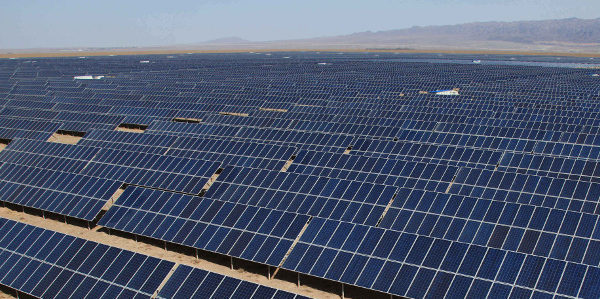Up significantly on 2016 and 2017, which saw installations of 7.14 and 7.2 GW, respectively, China’s solar industry shows no signs of slowing down this year, with Q1 registering 9.65 GW of new PV capacity, reports the NEA.
This figure significantly bucked forecasts by the Asia Europe Clean Energy (Solar) Advisory Co. Ltd (AECEA), which had estimated 7.5 GW of new capacity additions.
Confirming predictions that installs will veer away from utility-scale, which until now has been the dominant sector, this quarter has seen a massive increase in DG: 1.97 GW versus 7.68 GW.
In percentages, this represents an overall increase of 22% YoY, while utility saw a 64% decrease, and DG a massive 217% increase.
In addition to the shift in installation type, improvements in grid curtailment also characterized the first three months of the year, most notably in the autonomous region of Xinjiang and province of Gansu, writes AECEA, were curtailment was over 20% last year.
Last October, Bloomberg New Energy Finance (BNEF) reported that approximately 56.2 TWh of solar and wind generation was curtailed in China in 2017, underscoring how excessive investment and an oversupply of electricity pose an ongoing threat to renewables development.
Overall, AECEA expects that between 40 and 45 GW of solar PV will be installed throughout this year, which is much less than the up to 54 GW forecast by BNEF, IHS Markit's prediction of between 53 and 60 GW, and GTM Research's vision of 48 GW. In 2017, China added a record 53 GW, surprising everyone and taking cumulative capacity to 130 GW, of which 19 to 20 GW is said to comprise DG.
Popular content
Early in February, the solar consultancy said it expects solar to overtake wind energy in 2018 as China’s third largest source of power generation.
New regulations
AECEA is calling 2018 a “transition year” for PV in China, as new regulations reshape the market, which is expected to reach 250 GW of installed capacity by the end of 2020.
Last week, the NEA issued a draft version of these new regulations. The industry has until April 25 to submit comments.
According to AECEA, the proposed changes include:
- Three types of operation mode: Mode 1 – 100% self consumption; Mode 2 – less than 50% feed-into the grid; and Mode 3 – 100% feed-into the grid.
- Three project capacities: (i) Less than 6 MW (residential systems below 50 kW – can choose any of the three modes) can only apply for mode 1 + 2; excess power subject to regular local retail tariff – no FIT; (ii) 6 MW to 20 MW (can only apply for mode 1); and (iii) Larger than 20 MW (can only apply for mode 3, subject to regular FIT via competition).
- Rooftop systems larger than 20 MW will not considered “distributed generation”, but rather regular power plants and, therefore, subject to regular FITs via competitive bidding.
- Projects which have received approval in 2018, but are unable to start construction shall be cancelled and not rolled-over to 2019.
- Stricter enforcement of annual guiding targets.
- Unapproved, non-registered projects that initiated construction without prior government consultation shall no longer be accepted.
- Strengthen monitoring of project construction. In the case of rules being violated, a fine will be levied.
- Strengthen market monitoring.
- Poverty alleviation projects will be subject to corresponding regulations.
- DG projects will be administered by local provincial government – not central government – and will be encouraged to award DG projects via competitive bidding.
- Project developers shall make sure that lease contracts for roofs, buildings and ground are at least 10 years.
This content is protected by copyright and may not be reused. If you want to cooperate with us and would like to reuse some of our content, please contact: editors@pv-magazine.com.



3 comments
By submitting this form you agree to pv magazine using your data for the purposes of publishing your comment.
Your personal data will only be disclosed or otherwise transmitted to third parties for the purposes of spam filtering or if this is necessary for technical maintenance of the website. Any other transfer to third parties will not take place unless this is justified on the basis of applicable data protection regulations or if pv magazine is legally obliged to do so.
You may revoke this consent at any time with effect for the future, in which case your personal data will be deleted immediately. Otherwise, your data will be deleted if pv magazine has processed your request or the purpose of data storage is fulfilled.
Further information on data privacy can be found in our Data Protection Policy.